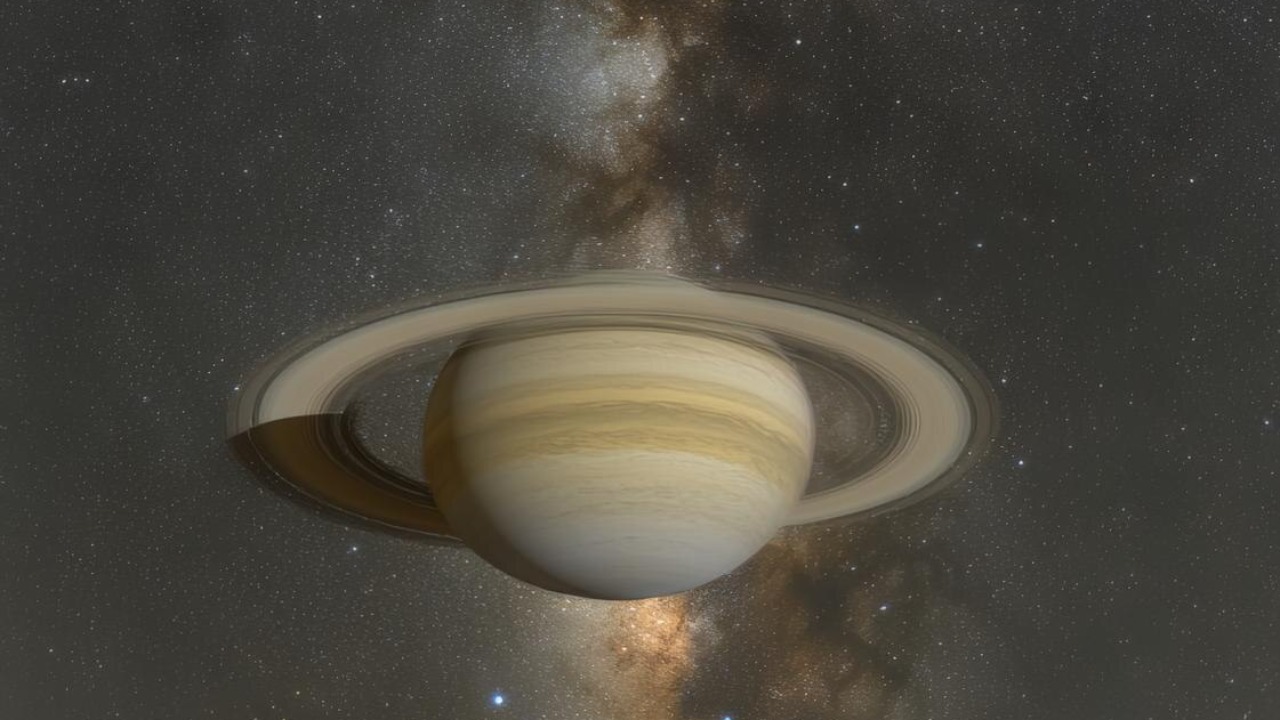
Saturn’s moon Mimas, known for its striking resemblance to the Death Star from Star Wars due to its massive Herschel crater, may harbor a global subsurface ocean beneath its icy surface. This revelation comes from a reanalysis of data from NASA’s Cassini spacecraft by scientists at the Paris Observatory. The potential ocean, estimated to be 20 to 30 kilometers deep and surprisingly young at just 5 to 10 million years old, was detected through unusual wobbling patterns known as librations. These suggest a liquid layer decoupling the moon’s icy shell from its rocky core. The findings, detailed in a 2024 study published in the journal Icarus, position Mimas as a prime candidate for astrobiological interest among Saturn’s moons (Astronomy; ScienceAlert).
Mimas: The Enigmatic Death Star Moon
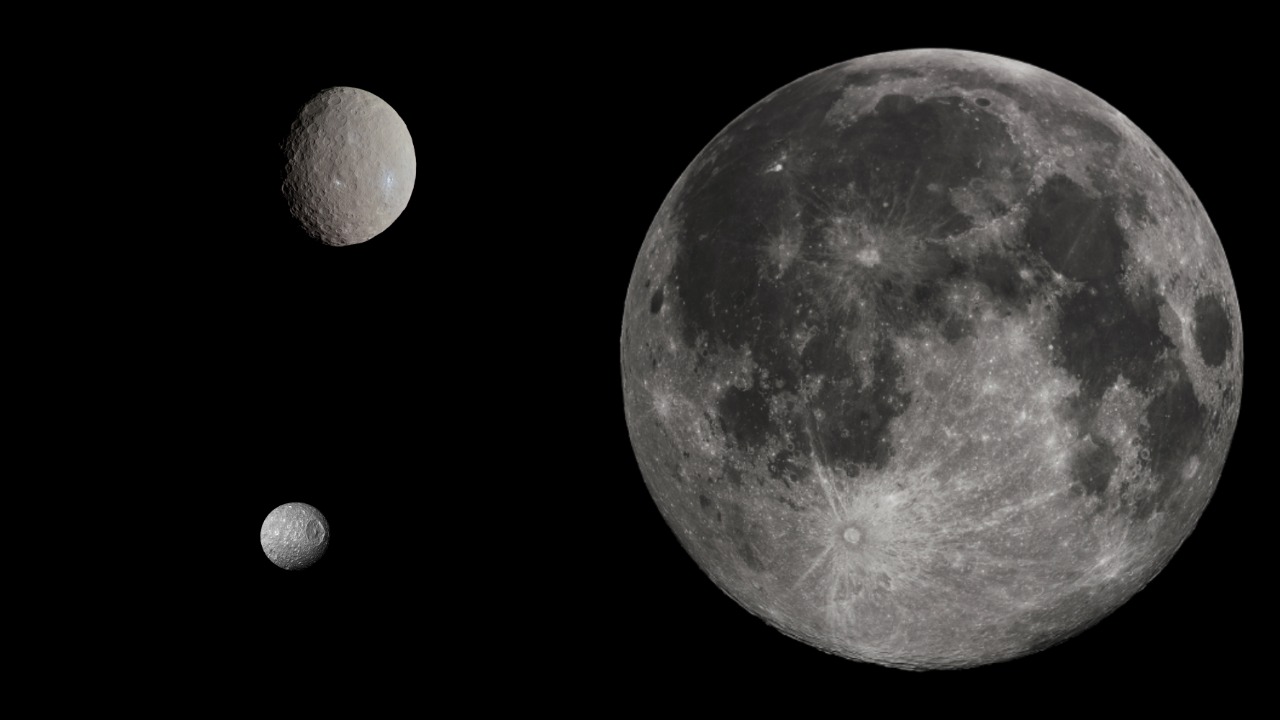
Mimas, with its small size of approximately 396 kilometers in diameter, is a fascinating celestial body. Its heavily cratered, icy surface is dominated by the Herschel crater, which spans one-third of the moon’s diameter and gives it a striking resemblance to the Death Star from Star Wars (IGN). This unique appearance has made Mimas a subject of intrigue and study among astronomers and space enthusiasts alike.
Orbiting as the innermost of Saturn’s major icy moons, Mimas maintains a distance of about 185,000 kilometers from the planet. Its low density of 1.15 grams per cubic centimeter initially puzzled scientists regarding its internal structure (Daily Galaxy). This low density suggested a composition primarily of water ice, but the possibility of a subsurface ocean adds a new layer of complexity to our understanding of this moon.
Mimas was first imaged up close during the Voyager 1 flyby in 1980, revealing its rugged terrain. However, it wasn’t until the Cassini mission from 2004 to 2017 that detailed data allowed for deeper analysis of potential subsurface features (SSB Crack News). These observations have paved the way for the current hypothesis of a hidden ocean beneath its icy crust.
Evidence from Cassini Data
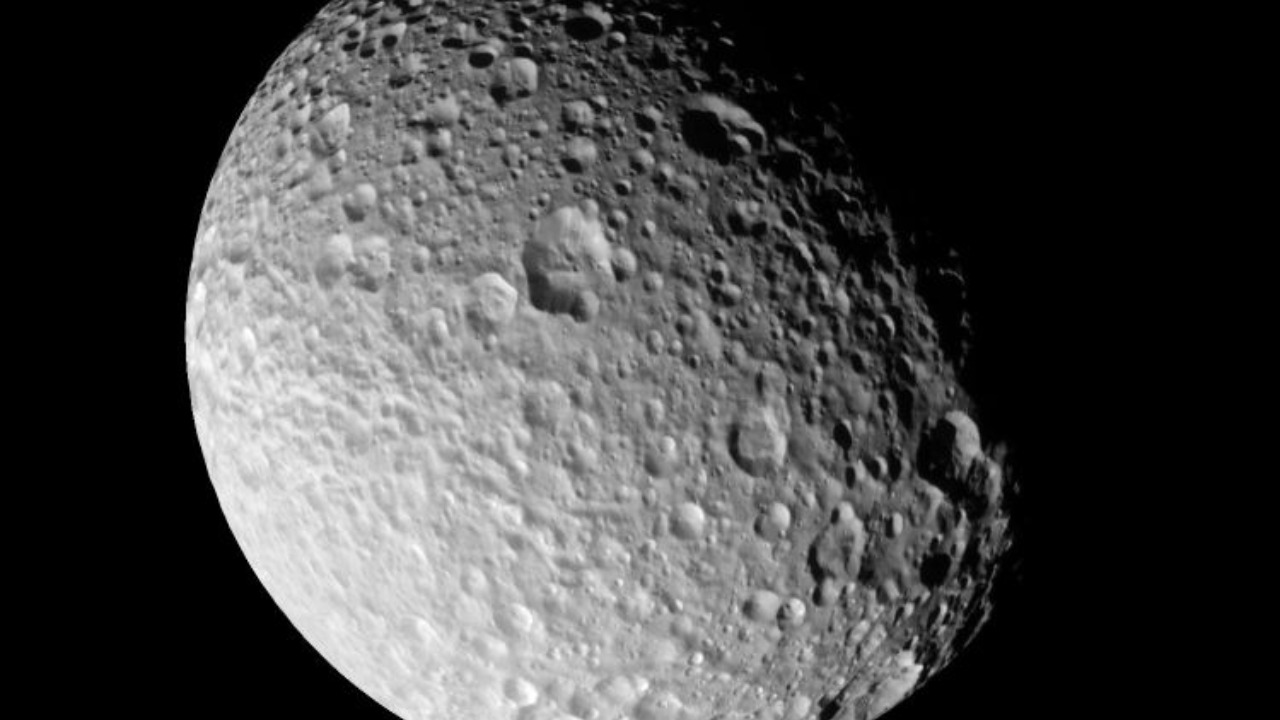
The detection of physical librations—subtle wobbles in Mimas’ rotation—was a key finding from the Cassini mission. These librations, measured from 35 close flybys between 2004 and 2017, deviated from predictions for a solid body and indicated a liquid layer beneath the ice (Astronomy). The libration amplitude of about 0.0014 degrees could only be explained by an ocean 20-30 kilometers thick separating the ice shell from the core, rather than tidal heating alone.
Alternative explanations, such as a spongy interior without liquid water, were ruled out because they couldn’t match the observed libration patterns as precisely as the ocean model (Daily Galaxy). This evidence strongly supports the presence of a subsurface ocean, challenging previous assumptions about Mimas’ internal structure and composition.
The Youth of the Potential Ocean
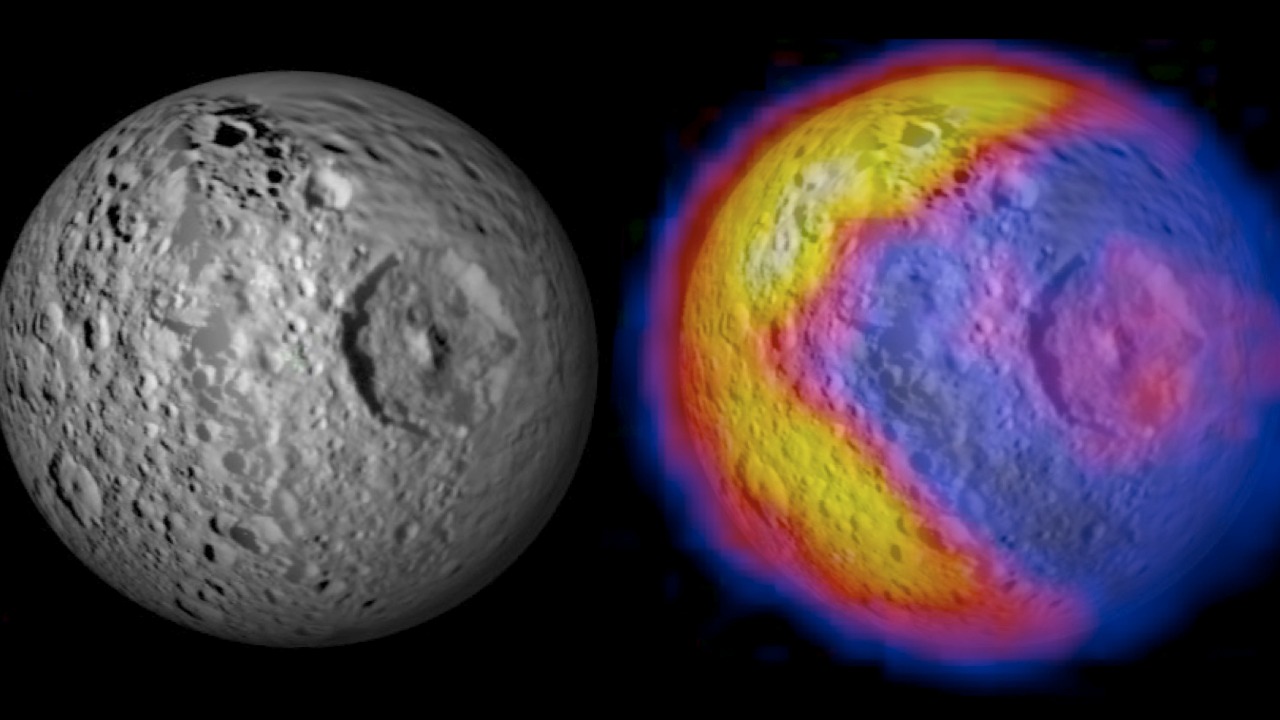
The estimated age of the ocean, between 5 to 10 million years, was determined based on the lack of significant icy shell thickening or resurfacing events that would be expected over billions of years. This suggests a recent formation from internal heating (Astronomy). The role of tidal forces from Saturn in generating heat through interactions with Mimas’ elliptical orbit could have melted subsurface ice relatively recently without leaving surface scars (SSB Crack News).
This youth implies that the ocean might still be evolving. Models predict it could freeze over in another 50 million years if heating diminishes (ScienceAlert). Understanding the dynamics of this young ocean is crucial for assessing its potential for habitability and its role in the broader context of Saturn’s moons.
Implications for Habitability
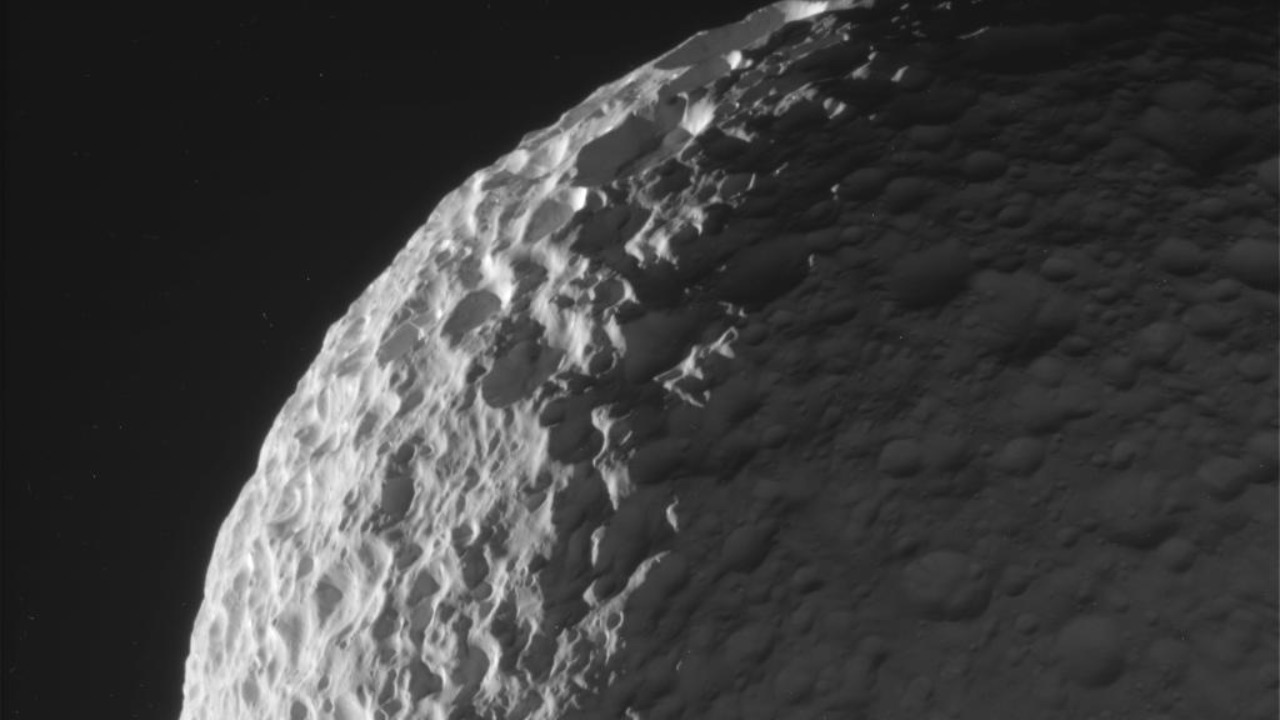
The potential ocean on Mimas raises intriguing questions about its ability to support life. Liquid water, combined with possible chemical energy from rock-water interactions at the seafloor, could create conditions similar to those on Enceladus or Europa (Daily Galaxy). The lead author of the study noted, “Mimas should not be able to retain an internal ocean over billions of years, yet it does,” highlighting the unexpected stability of this young ocean for astrobiological prospects (IGN).
However, challenges to habitability exist, such as Mimas’ small size limiting sustained heat and the ocean’s depth being too shallow for strong hydrothermal activity compared to larger moons (SSB Crack News). These factors may limit the potential for life, but they also provide a unique opportunity to study the conditions under which life might arise in such environments.
Future Exploration and Research
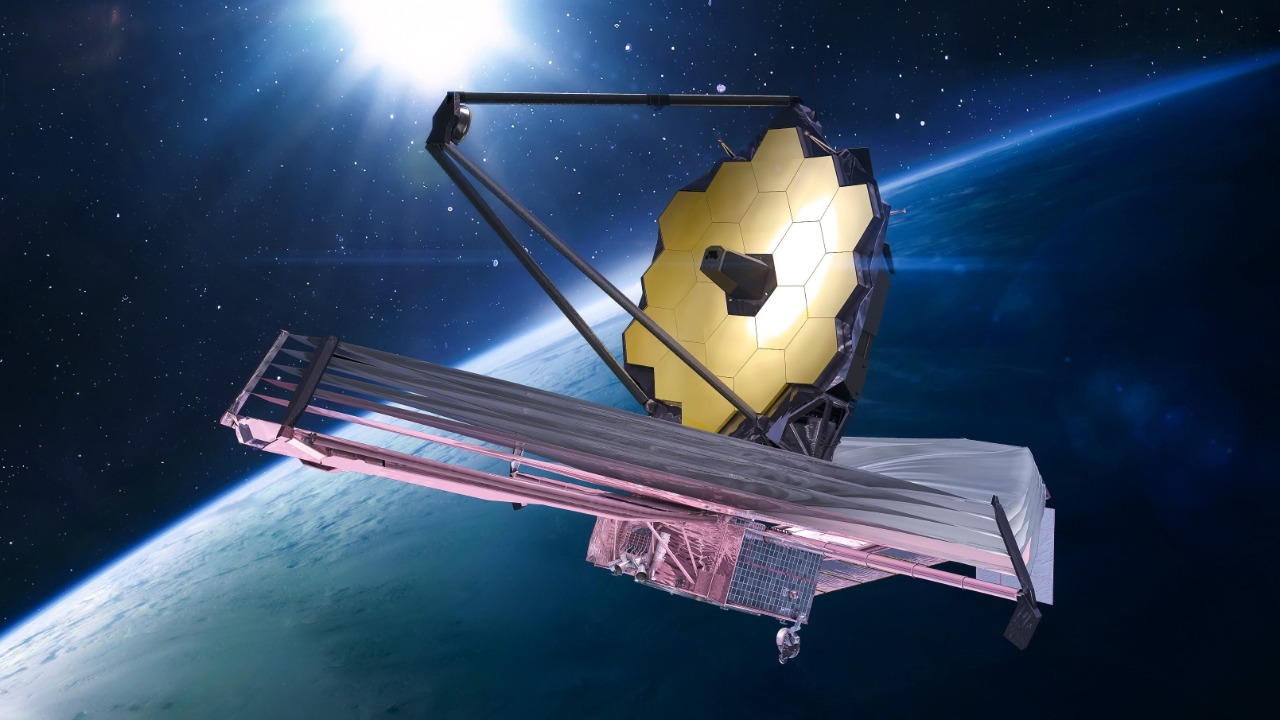
Future exploration efforts aim to further investigate Mimas’ hidden ocean. Planned follow-up observations using the James Webb Space Telescope will search for water vapor plumes or infrared signatures of geothermal activity on Mimas, building on Cassini data (ScienceAlert). These observations could provide critical insights into the moon’s current state and its potential for supporting life.
Concepts for a dedicated Mimas orbiter mission, similar to the Europa Clipper, are being proposed. Such a mission would deploy ice-penetrating radar and measure magnetic fields to confirm the ocean’s salinity and depth (Astronomy). Ongoing modeling efforts by the study’s team at CNRS and Paris Observatory aim to refine ocean parameters, with results expected to influence NASA’s outer solar system priorities in the coming years (Daily Galaxy).